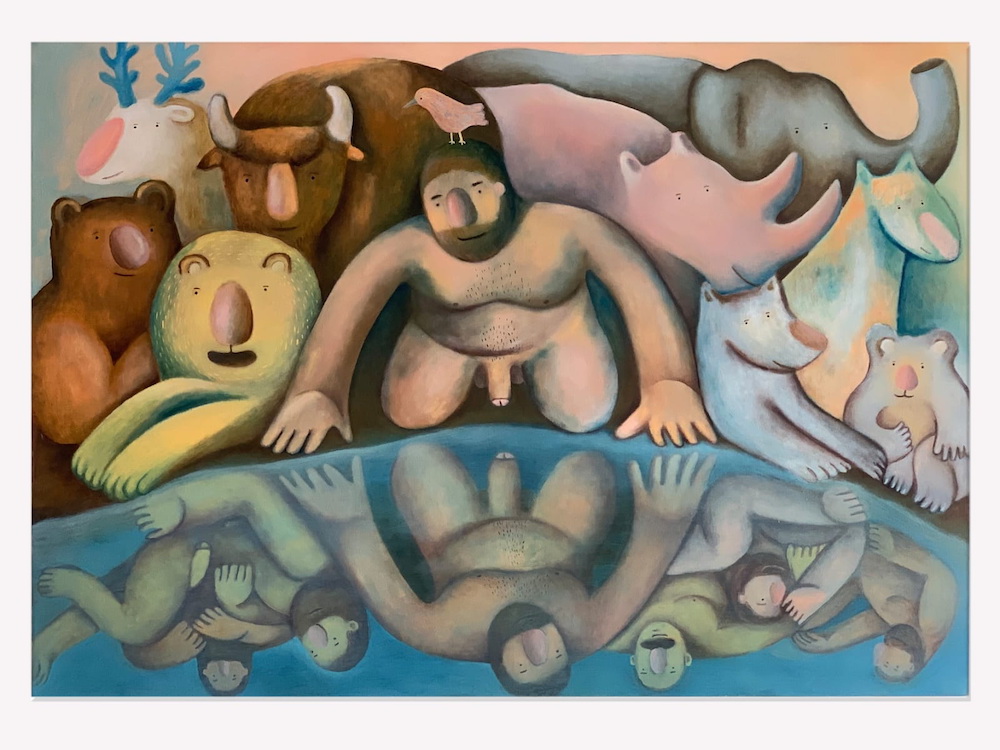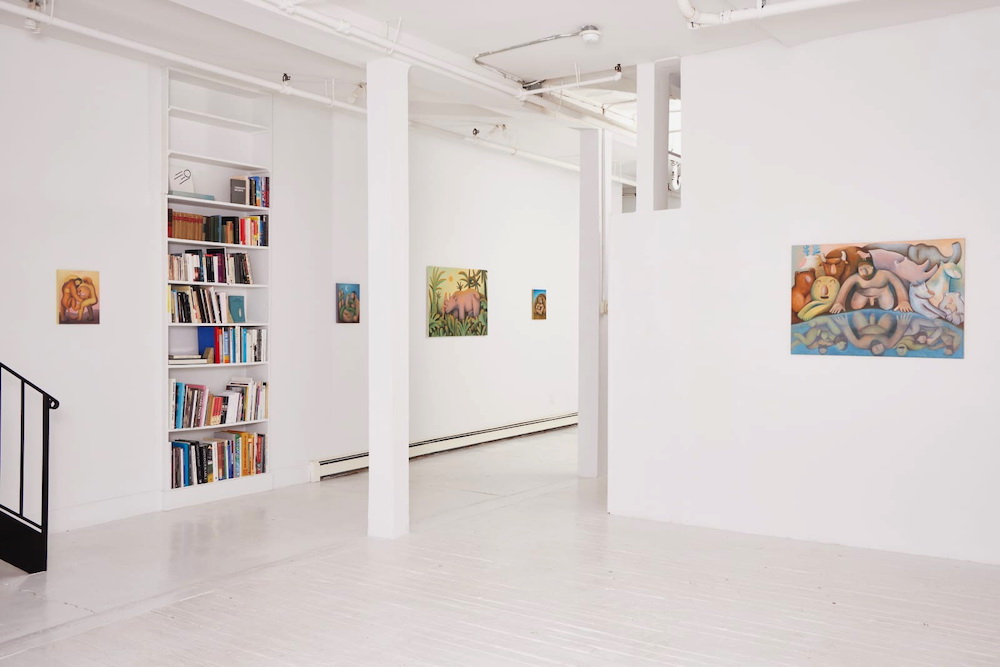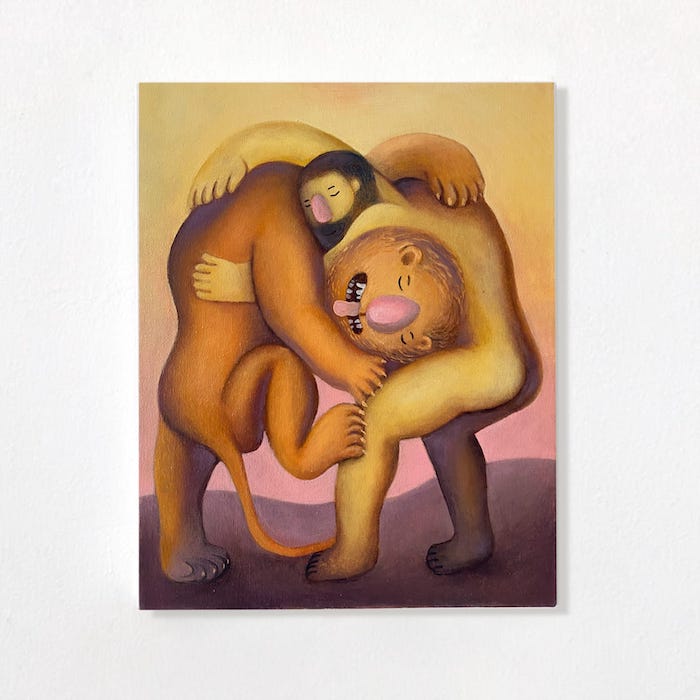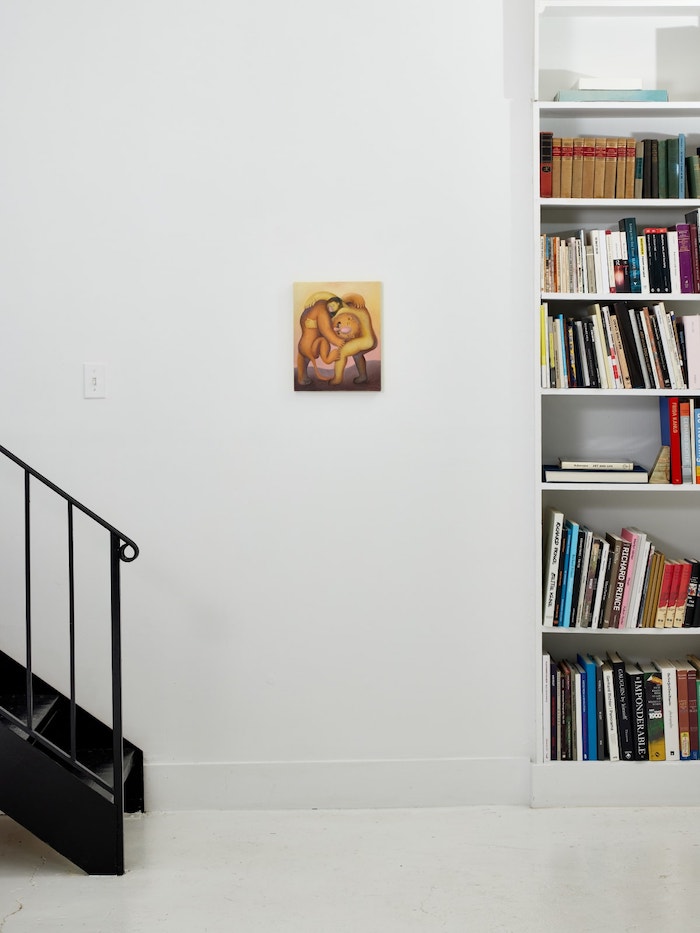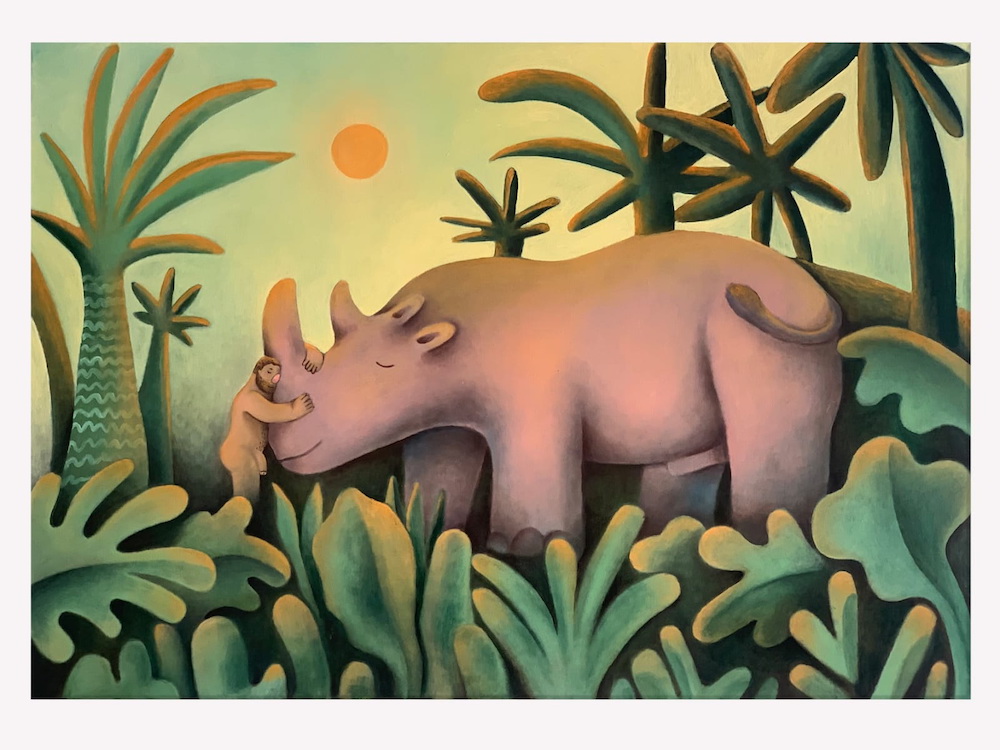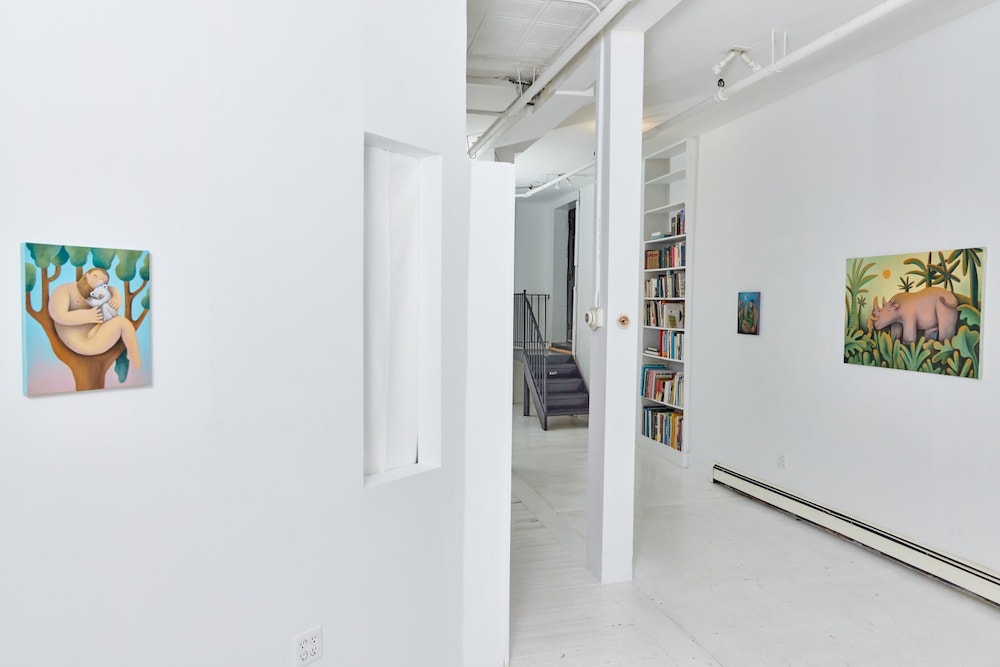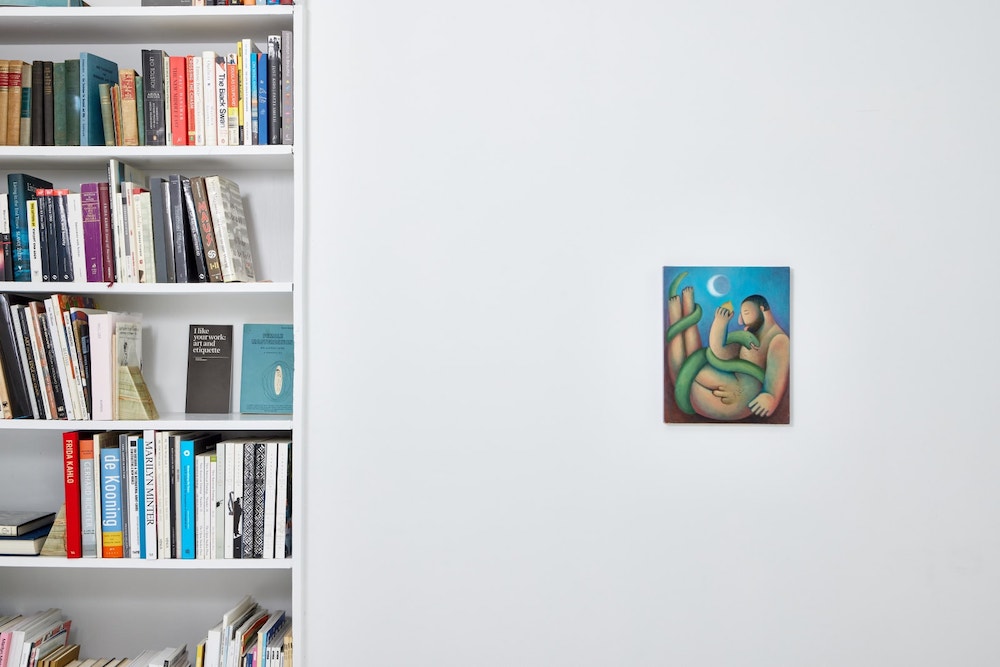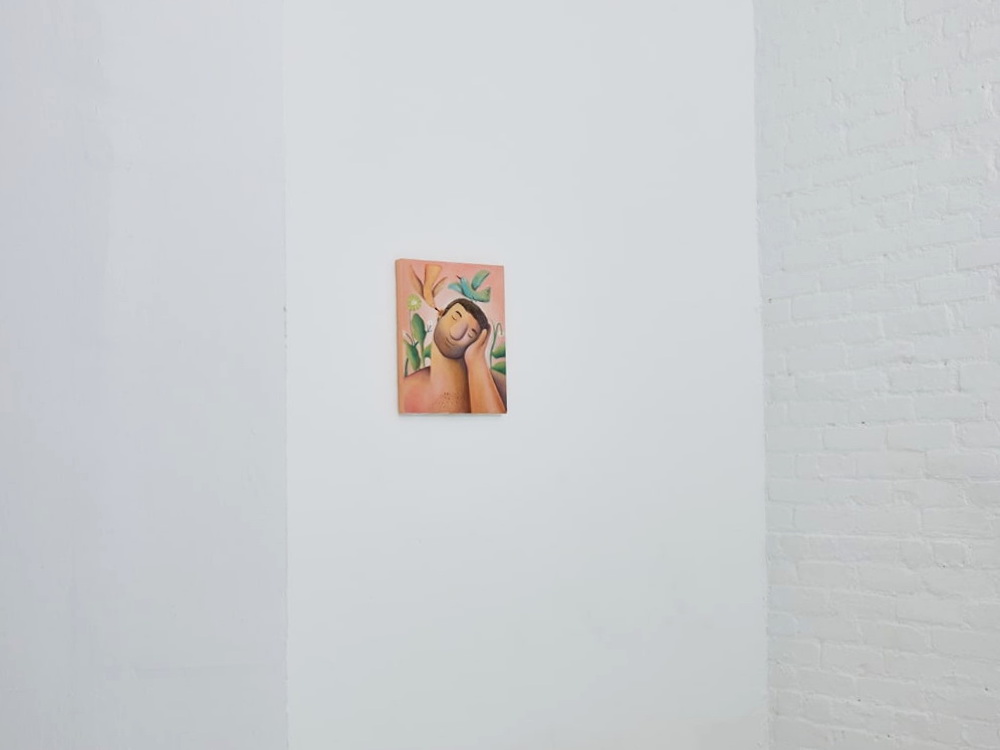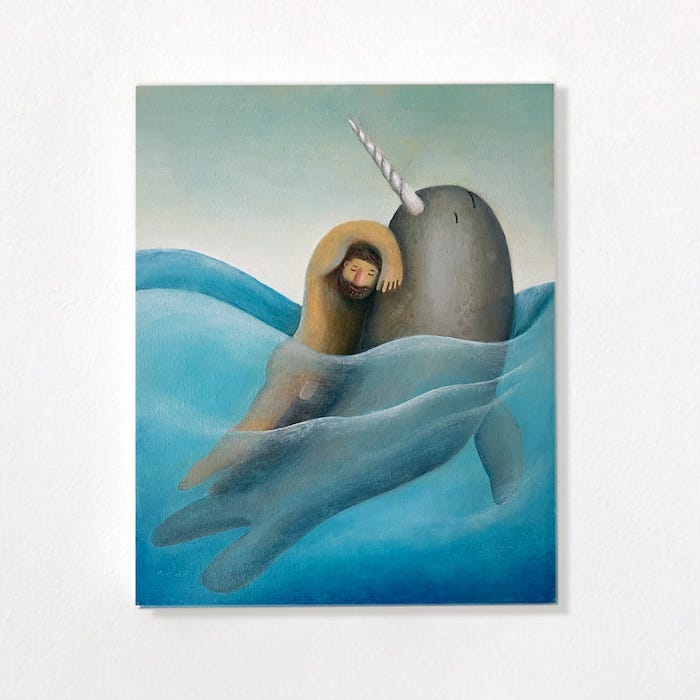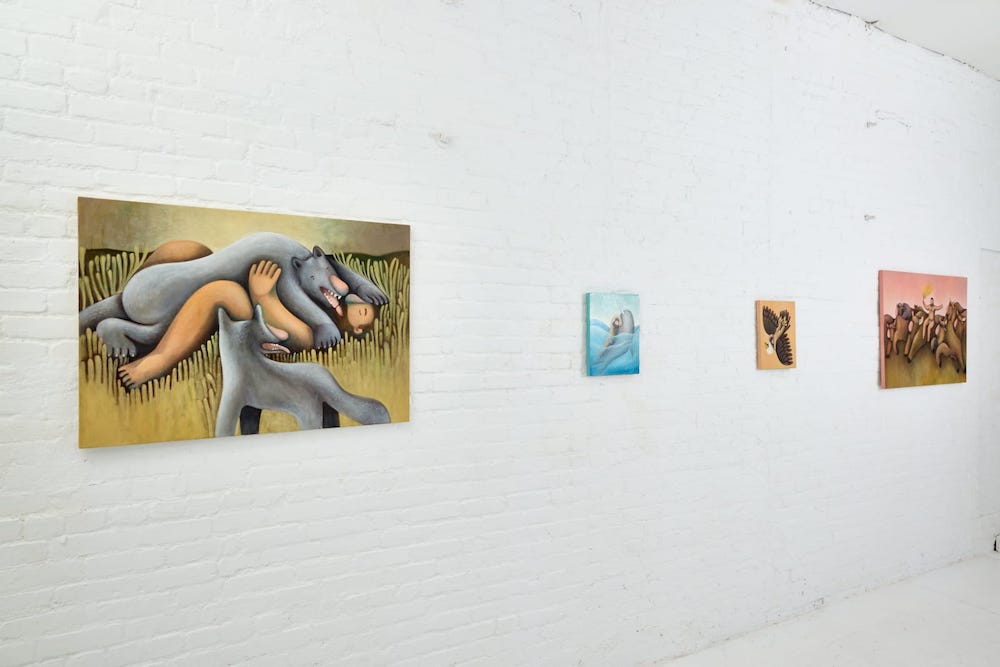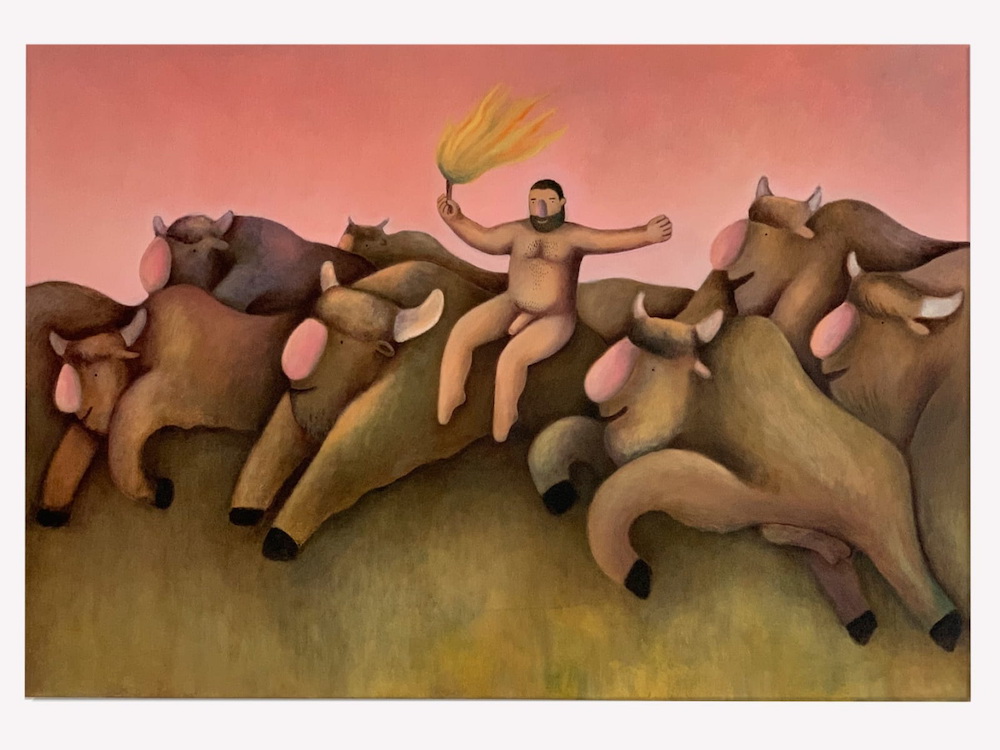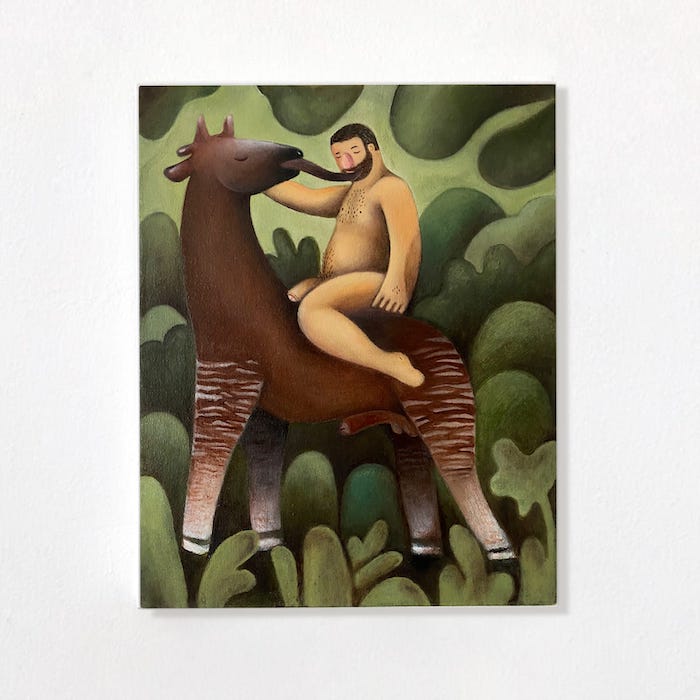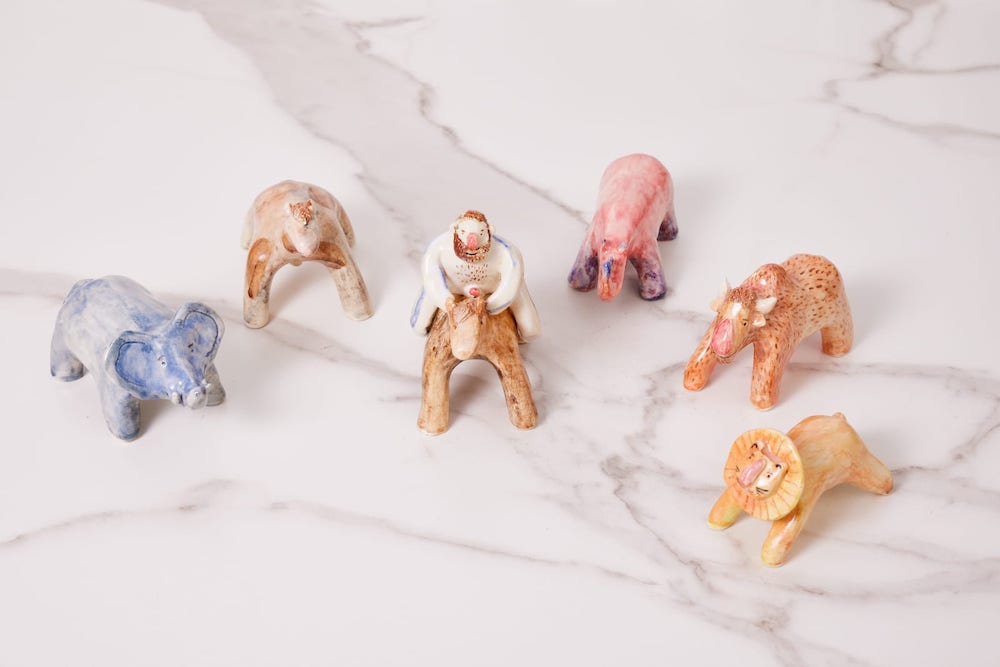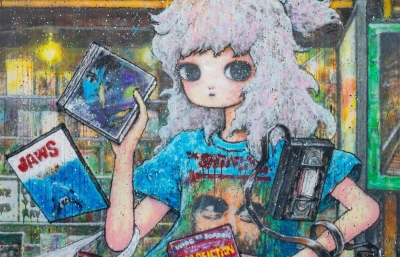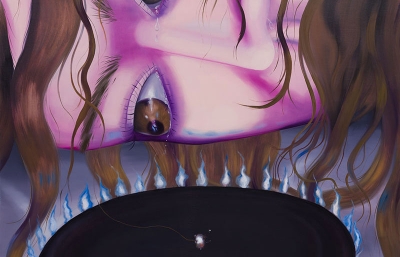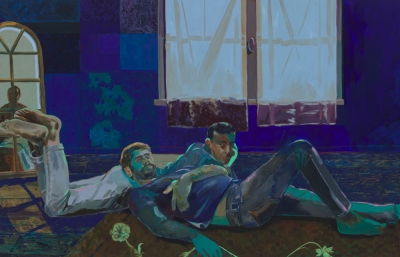Confidence, comfort, calmness are not the qualities we see often these days and this could be an important reason the works by Carlos Rodriguez feel so appealing and irresistible. Dominated by a naked male character who is going through life self-assured and full of joy, these visuals are the direct opposite of the anxious and insecure mindset most of us are facing on a day-to-day basis. Now surrounded by a motley cast of wildlife creatures, the new series of paintings and ceramics that comprise his current solo show at Fortnight Institute is a fantastical getaway from the ever-pressing conundrums of present-day reality.
Costumbres Amorosas de los Animales (The Loving Habits of Animals) borrows the title from a 1945 book on the study of the biological and loving habits of animals and marks the departure from the more sexual but tender queer male usually depicted in his work. When looking at his previous ceramic sculptures, illustrations, and paintings, Rodriguez's work had obviously accented the focus on queer sexuality. naked bearded males with lots of body hair and a big funny nose, even the most explicit scenes of the erotic act appear playful and almost innocent. "To me, it is about representing a grown-up man that is curious about his own body and desire," the artist told Juxtapoz about his recurring character and what he stands for. "In my paintings and ceramics, these little men seek to evoke a state of joy and freedom in the viewer, as I wish to show other aspects of masculinity that are more related to play and fraternity. Sure, there is plenty of sexual symbolism, but I always prefer to extend an invitation to exploit pleasure through play." It's the unobtrusive, casual way in which they are getting involved in all the enjoyable undertakings that makes them lovable and irresistible. "I am well aware my work tends to be pigeon-holed as “gay art”, nonetheless I am pleased to be reaching a more diverse crowd, where all people, regardless of their preferences, feel connected to these characters, even if it is only to the hairy bellies," the artist states about the general tone and appeal of his work.
"It has been a very tough year for all of us, indeed. Some days you just want to stay in bed and think of other stuff. Even I have experienced a persistent loss of libido," Rodriguez told us about the way the present day reality influenced his mood. "I found a BBC article that aimed to explain the biology of love. Scientists concluded that nature itself had invented love as a way of survival, in which the most successful species were the ones to transcend the early stages of romance and sex through the strengthening of bonds. At the end, it stated that evolving love is the only love that helps us survive. It might sound cheesy, but it is true." Removed out of a lustful setting and placed into the wilderness to interact with animals, added a new level of passion, tenderness, joy, and companionship to his stubby heroes. By employing subdued hues of earthy and fleshy colors, Rodrigez started constructing an unrefined, yet exotic, tropical place in which these images take place. Simplifying his subjects' forms and features to the picture book quality, he created a strong sense of rounded voluminosity, enabling his message and vision to appear as friendly, genuine, and uncorrupted as possible.
Taking some of the elements of mythology and symbolism from the book he borrowed the title from, the Mexican artist is able to depict a more poetic, emotive, generally loving side of his subject. Still exceptionally comfortable and confident with his body, the main character is lovingly interacting with the animal kingdom, even when fighting their king as seen in Lucha (Fight), 2020. Although stripped away from the company of his other human friends and partners, the main subject is lovingly interacting with the animals he encounters and more importantly, gets that same love back from them. "I chose certain animals that had very human behaviors," he tells us about his cast selection process. "For example, koalas cry whenever they feel rejected, eagles dance their way towards the abyss when falling in love, the rest of them, I chose based on mythological references, symbolisms, such as the snake, or even their uniqueness, such as the okapi or the narwhal." 
With some of their physical attributes being rendered in a similar manner, from private parts, over facial features to expressions, Rodriguez makes a strong connection between humans and nature, which culminates in El Reino Apacible (Peaceful Kingdom), 2020. Depicting a scene that evokes the myth of Narcissus, the image shows the character looking at his reflection surrounded by wild animals whose reflected image is one of his human friends. Both capturing the longing for the physical presence company of other humans, as well as the instinctive connection with the wildlife, this particular image echoes the theme of the show - the physical similarities and amorous practices between animals and humans, accented with the current social climate. "I wanted to present something more global and encouraging because we need a message of hope now more than ever. Maybe when this is all over, our libidos will go back to normal, as it happens to most species during spring, and then I might go back to painting little men playing freely with their penises," the artist summarized the general idea behind this joyous body of work. —Sasha Bogojev



